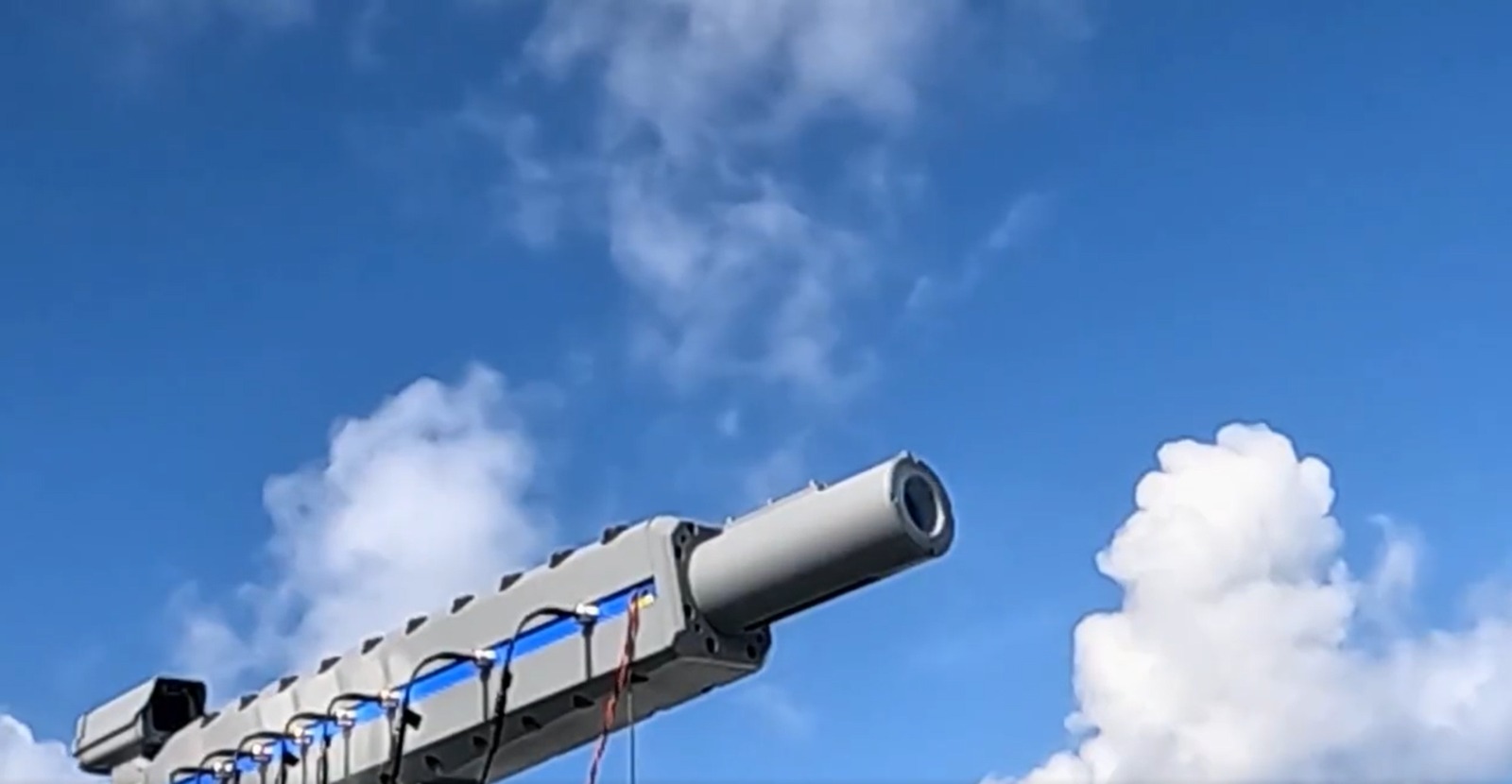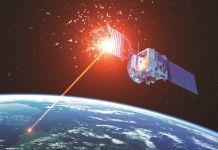Japan has successfully test-fired a medium-caliber maritime electromagnetic railgun from an offshore platform as it continues to advance its defenses in the face of burgeoning regional security threats.
F-16 Vipers: Why Is Turkey ‘Desperate’ For Fighting Falcons Despite Presence Of Sukhois, Rafales & Eurofighters In Market?
For the test, the Japanese Maritime Self-Defense Force (JMSDF) collaborated with the Acquisition Technology & Logistics Agency (ATLA), a Japanese Ministry of Defense division. There is still little specific information regarding what this included and when it was conducted.
On October 17, ATLA announced the successful testing, claiming that this was the first time any nation had achieved such a feat since maritime railguns are obviously mounted on ships. Japan hopes to use the railgun on land and at sea. Thus, the test would be a significant advancement for this novel technology.
Along with the announcement posted on Platform X (previously Twitter), ATLA attached stunning video footage of the railgun in action, showing the firing of projectiles from various angles. The Japanese Ministry of Defense (MoD) announced it had decided to develop an electromagnetic weapon system to intercept hostile hypersonic missiles in early 2022.
Moreover, ATLA stated that it was advancing work on electromagnetic railgun. “Since the financial year 2016, we have studied the underlying technologies of railguns. In the studies, we have worked on increasing launch velocity and establishing material technologies for the rails, which have high current endurance characteristics,” an ATLA spokesperson told Janes at the time.
A railgun is an electromagnetic weapon that can shoot projectiles at about Mach 7, or seven times the speed of sound, on targets like ships, missiles, and aircraft. It has long been predicted and stated by some of Japan’s officials that the country wants to combine its railgun system with long-range missiles to increase its capacity to intercept aerial targets.
The development and testing of these “railguns” comes as Tokyo mulls how to adequately counter the threat presented by hypersonic weapons developed by regional adversaries like China, North Korea, and Russia. A Japanese policymaker told Nikkei Asia earlier that Japan is building a railgun system to dissuade missiles from being fired in the first place rather than intercepting them.
#ATLA has accomplished ship-board firing test of railgun first time in the world with the cooperation of the JMSDF. To protect vessels against air-threats and surface-threats by high-speed bullets, ATLA strongly promotes early deployment of railgun technology. pic.twitter.com/MG5NqqENcG
— Acquisition Technology & Logistics Agency (@atla_kouhou_en) October 17, 2023
With the likelihood of future conflict in mind, Japan is strengthening its defense capabilities and increasing military readiness. This includes plans to speed the procurement of Tomahawk missiles, build its long-range missiles, and acquire the ability to hit adversary’s military bases in the face of a lingering threat from an increasingly aggressive China.
Moreover, Japan has made no bones about how it feels threatened by North Korea’s expanding arsenal of missiles, which includes hypersonic weapons. North Korea launched a ballistic missile over the island nation just a year ago, which landed further east in the Pacific Ocean. With the country publicly pledging to destroy any North Korean rocket that crosses its airspace, Japan’s rail gun development and integration would be ideal.
Meanwhile, China has also claimed to have developed heat-seeking hypersonic missiles ahead of the US, which could target aircraft carriers and moving vehicles.
Military experts believe that railguns would certainly be a desirable option for targeting a variety of aerial threats at sea, including incoming hypersonic cruise and perhaps even hypersonic ballistic missiles, given the speeds at which projectiles can be fired from them.
What Do We Know About Japan’s Railgun?
A rudimentary, smaller 16mm railgun project was started by the agency’s Ground Systems Research Centre (GSRC) in 1990. Several years later, in 2016, the agency initiated what was an attempt to create a prototype with anti-air and anti-missile capabilities. The concept has since gone through a significant evolution over the years.
It was only in 2018 that video footage of a proof-of-concept example was published by ATLA, which showed a small-caliber research railgun together with relevant support and testing tools. However, the railgun developed and tested recently is more extensive and has better capabilities than initially envisioned.

Although only limited details are available about ALTA’s railgun, Current specifications for ATLA’s medium-sized electromagnetic railgun prototype, which was initially spotted in May of this year, emphasize that the weapon can shoot 320g (or 0.7lb) 40mm steel rounds.
According to a previous report published in Shephard Media, the ATLA railgun utilizes five megajoules (MJ), or five million joules (J), of charge energy. It can fire bullets at a speed of around 2,230m/s (Mach 6.5). 20 MJ of charge energy is what ATLA wants it to run on eventually.
There is no information about which ships Japan will eventually mount future railguns, assuming they become a functional reality. However, the nation has previously suggested that they might be mounted on at least some JMSDF destroyers. This becomes imperative given that the development of long-range missiles by its regional adversaries puts the Japanese destroyers at risk.
Additionally, it has been stated that ATLA plans to equip several land-based trucks with railguns to similarly engage hypersonic missiles.
Earlier, adding the Aegis Ashore land-based system to Japan’s current arsenal, which consists of Aegis destroyers and the Patriot Advanced Capability-3, or PAC-3, ground-based system, was intended to boost the country’s ballistic missile interception capabilities. However, the Japanese government abandoned this plan in 2020.
The current idea aims to add railgun interceptors to the existing missile defense system. Japan is considering long-range missiles, enabling it to unleash projectiles from afar. The systems would work together to form a three-tier deterrent. The new system would plug the holes in Japan’s missile retaliation capabilities.
Additionally, interceptors can be fired by railguns at varying speeds. Operators can change the rate at which an interceptor moves by manipulating the amount of electrical power used. These choices would be based on how quickly incoming missiles approach. Railguns are also somewhat stealthy due to the small size of their “bullets.”
The system is expected to be ready for use in the second half of the 2020s. This next-generation railgun system is expected to give Japan multiple intercept capabilities in addition to long-range missiles.
Moreover, it is noteworthy that even though the US military decided to forego developing electromagnetic railgun technology, Japan has persisted in its efforts. Although it will take several rounds of testing and better integration of platforms before the system can be inducted, Tokyo is well on its way to achieving that, as evidenced by recent testing.
- Contact the author at sakshi.tiwari9555 (at) gmail.com
- Follow EurAsian Times on Google News




